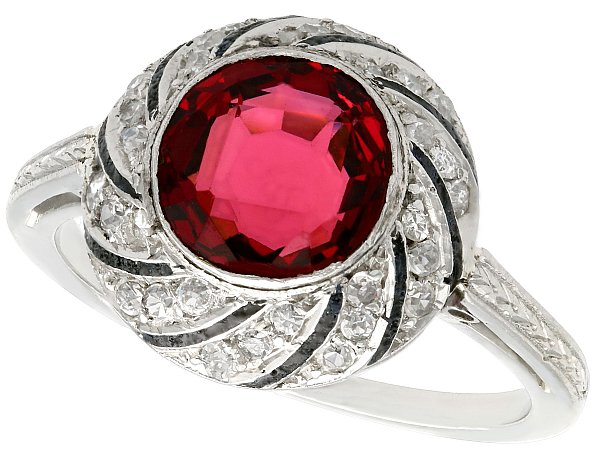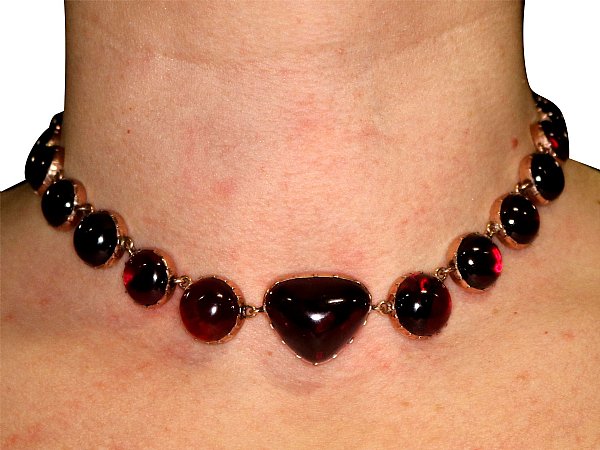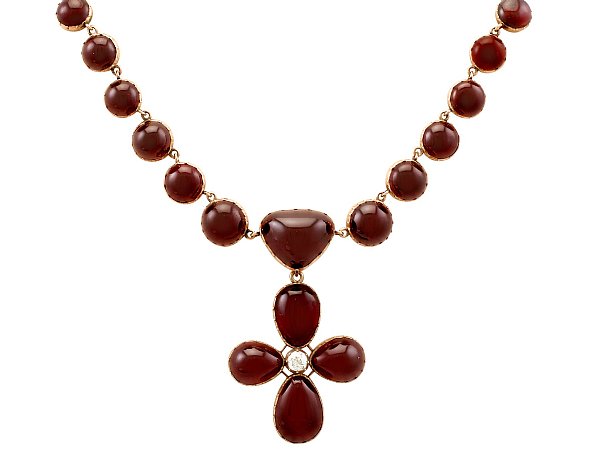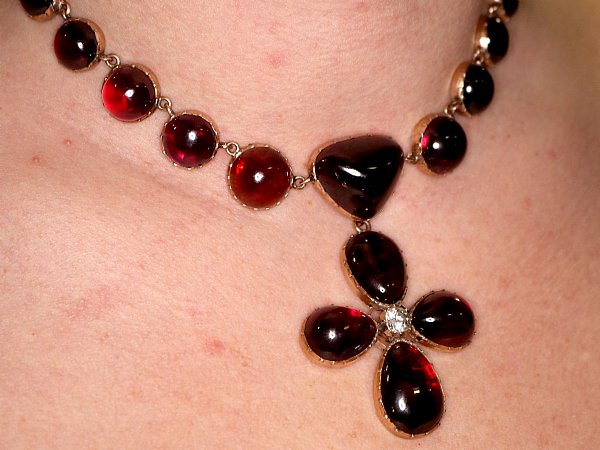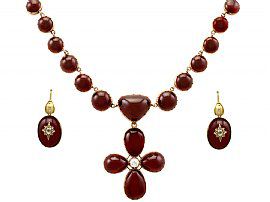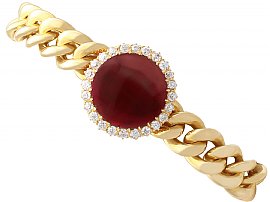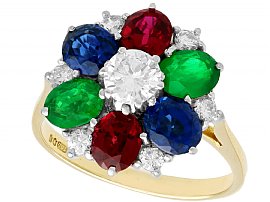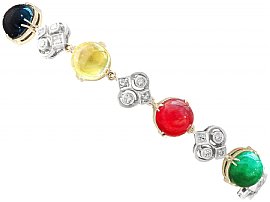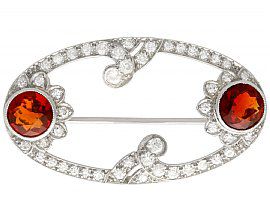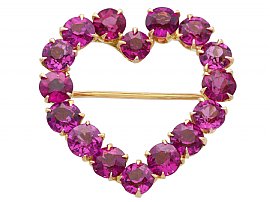The Garnet Gemstone
Garnets, the beloved birthstones of January, are said to possess many powerful symbolic qualities and have a rich history in the world of jewellery. Varying from the size of a grain of sand to the size of an apple, this dark red stone can be found all around the world and is deeply rooted in many diverse histories and cultures. From Sumeria to Ancient Rome, garnets have been celebrated throughout the centuries, and thanks to their radiant beauty and mysterious qualities, they remain much-loved today.
Garnets are the perfect January birthstone gift and they are also said to bring luck and ensure a safe return from your travels. Read on to discover the different types of garnet, the stone's rich symbolism, and how the garnet has been used in jewellery making throughout history.
Types of Garnet
Although we most commonly think of garnet as deep red in colour (in reference to the most common type of garnet, the almandine garnet), there are actually many varieties of this stone, each unique in colour and tone.
Almandine Garnet: the almandine is the most commonly known variation of garnet, and probably the type that first comes to mind when you picture a piece of garnet jewellery. This type of garnet is scarlet in colour with muted overtones of earthy brown.
Andradite Garnet: this next type of garnet, andradite, is also earthy in colour. The main tones that can be seen in an andradite are olive green, dark yellow, and black.
Grossular Garnet: slightly lighter and brighter in tone, the grossular garnet radiates sunny hues of yellow, red, orange, and gold. Some varieties also include shades of lush green.
Pyrope Garnet: another fiery red garnet, the pyrope variety radiates a range of colours including deep crimson, violet and indigo. It is sometimes even referred to as "living fire."
Spessartine Garnet: this warm-toned garnet is one of the rarer varieties. It exhibits shades of tangerine orange, deep red, and dark gold, but can be pale yellow in its purest form. Often, this variety is found mixed with the almandine garnet.
Uvarovite Garnet: finally, we have the uvarovite garnet, which is the only consistently green variety. This garnet type is emerald green in colour and is a particularly rare variety. This type of garnet is most often found on natural surfaces, coating surfaces with tiny, individually sparkling crystals.
The Garnet Throughout History
The garnet is thought to have been named after the Latin name Granatum, meaning pomegranate due to the resemblance the granular variety of garnet bears to pomegranate seeds. Throughout history, garnets have been used to adorn clothing, set in jewellery, and carried as a talisman of good luck. These precious stones are by no means exclusive to a certain time period or society - we can see them in all corners of the history books.
For the Ancient Romans, garnets symbolised wealth and status. During this time, the gems were fashioned into cameos and intaglios depicting classic figures. For the Ancient Egyptians, on the other hand, all garnets were thought to honour Sekhmet, the Egyptian Goddess of War. Garnets can also be traced back to former Czechoslovakia during the Bronze age (more than five thousand years ago.)
During the Middle Ages, garnets were thought to enhance faith and truth, while dispelling melancholy. They also played a prominent part for both sides during the Crusades, serving as a lucky talisman for both Christians and Muslims.
The garnet can often be found in the context of war. Some Asiatic tribes even utilised the gemstones as weapons; they would sling them from their bows or later use them as bullets. It was believed that the blood-coloured stone would ultimately do more damage than a bullet.
In addition, garnets were also treasured by Native American communities, who believed the garnet to be a sacred stone. The South American Indians, the Aztecs, the African tribe leaders, and the Mayans all held the mighty garnet in high regard.
Despite their prominence throughout history, it wasn't until the late 18th century and early 19th century that garnets really stepped into the spotlight. During this period, pear, cushion, and round cut garnets were used to embellish parures (jewellery sets usually comprising of a necklace, a pair of bracelets, earrings, and a brooch.) Foiling became popular in jewellery making at this time, which intensified the glow of garnets and other gemstones.
The Symbolism of the Garnet
Despite their somewhat bloody past, garnets are thought to bring love, luck, and success. One prominent theme in their history is that they serve as a lucky talisman for travellers. Even today, garnet jewellery is typically gifted to a loved one about the embark on a long journey; the stone is said to ensure a safe return home.
Garnets are also deemed to bring luck in the business world, thanks to their supposed power of attraction and luck.
The garnet is also rumoured to encourage a quick return of separated love, enhancing intimacy and helping to re-build a romantic bond. Because of this, garnet jewellery is particularly valued as a gift to a partner who is going away, or just returning from a long trip.
Rich in symbolism and history, garnets are sure to make a wonderful gift - especially for someone born in January who is lucky enough to have the garnet as their birthstone! View our entire selection of garnet birthstone gifts and find something that will bring your luck.
